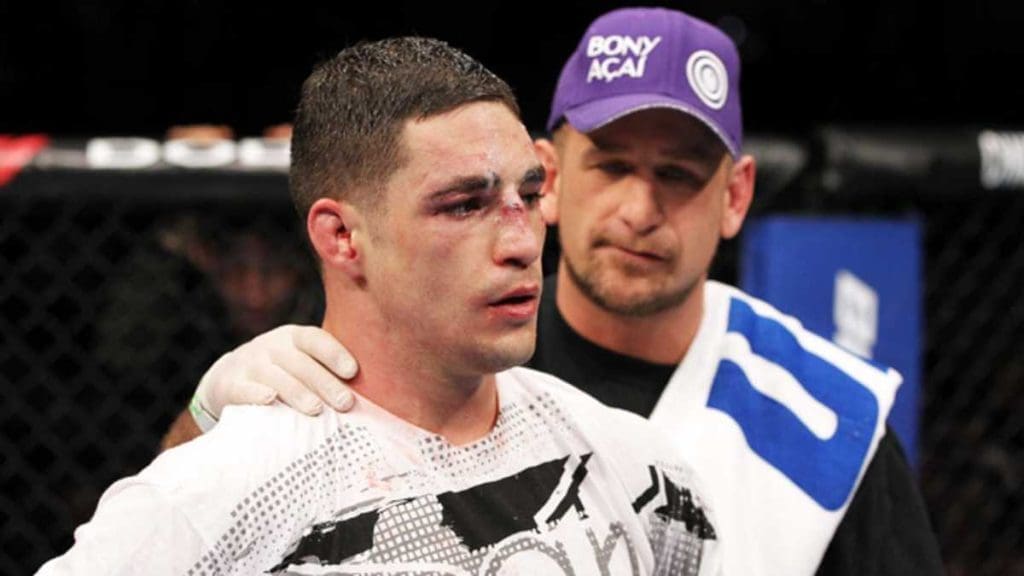Story content
Overcoming devastating injuries is an unfortunate but integral part of a mixed martial artist’s journey. The sport, which combines elements of wrestling, Muay Thai, and judo, can be unforgiving, with one misstep potentially leading to career-altering consequences. This reality is something that champions and aspiring fighters have long faced.
When Greg Jackson and Mike Winkeljohn founded their now-legendary Jackson Wink MMA Academy, they created a hub for athletes seeking to hone their skills. The gym’s reputation soared with the success of homegrown champions like Diego Sanchez. Since then, it has become a proving ground for top-tier talent, including legendary female boxer and two-time Olympic gold medalist Claressa Shields.
While the Academy has produced numerous champions, it also offers a unique perspective on the physical and mental challenges fighters endure. This article discusses what MMA accidents and recoveries teach both fighters and fans about overcoming injuries.
The Nature of MMA Injuries
MMA injuries, from bruises to broken bones, are an inevitable part of a fighter’s journey. Even at elite gyms like Jackson Wink MMA Academy, athletes push their limits, and accidents can still occur. Interestingly, according to SportsBoom, the nature of these injuries differs significantly from boxing.
Boxing has a higher fatality rate and greater risk of serious head trauma because damage is concentrated in head strikes. In contrast, while MMA fighters experience a higher overall rate of injuries, they are less likely to suffer concussions and loss of consciousness.
Ultimately, recovering from a career-altering injury like the leg break Conor McGregor suffered is more than just a physical process. It demands patience and mental discipline, qualities that extend beyond the sport. By learning to accept setbacks, fighters often emerge stronger and more self-aware.
The Psychology of Injury Recovery
For any fighter, a serious injury is a profound psychological test. The initial fear of losing their edge or missing opportunities is intense, but true recovery is a mental battle. As the NIH confirms, a martial artist’s ability to be resilient and manage their reactions to adversity has a huge impact on their performance.
The research found that a lower level of “foul play,” or violent aggression, is linked to a decreased likelihood of moderate or severe injuries. This suggests that psychological factors like resilience and a fighter’s mindset are critical to injury prevention and recovery.
Veteran fighters and coaches know that injuries can be a catalyst for growth. By reframing an injury as a chance to address weaknesses, athletes can rebuild their bodies and their confidence. This journey from setback to comeback is a central theme in MMA, teaching both fighters and fans valuable lessons in mental fortitude.
Accidents and Recovery Beyond the Octagon
Not all fighter injuries happen in the gym or the cage. A car accident, for instance, can be just as devastating, with physical and psychological impacts. Recently, in St. Louis, a multi-vehicle crash on Lemay Ferry left one person injured, highlighting the risks athletes face just like anyone else. Navigating the aftermath of such an event often requires the same resilience learned in MMA and the help of a St. Louis car crash lawyer.
As TorHoerman Law notes, being injured by someone else’s negligence can cause physical pain, emotional trauma, and financial hardship. The process of recovery in these cases often mirrors the discipline learned in the cage. It requires seeking specialized medical care, undergoing rehabilitation, and navigating complex processes to ensure victims receive the compensation they deserve.
For a fighter, overcoming an external injury requires the same perseverance used in the sport. This reminds everyone that the lessons of resilience learned in MMA apply to all of life’s unpredictable moments.
The Power of Community in Overcoming Accidents
The MMA community is a powerful force for overcoming accidents. When a fighter faces a devastating injury, the collective support from fellow athletes, coaches, and fans is crucial.
For instance, after Irish fighter Ryan Curtis suffered life-changing injuries, including a broken back, during a training session, the community rallied around him. His colleague, Leah McCourt, launched a fundraiser that quickly raised nearly €118,000 (138,000 USD) for his rehabilitation and to support his family.
This solidarity shows that recovery isn’t just an individual journey; it’s a collective effort that binds the MMA world together. These stories of resilience show that with support from friends, family, and the community, even the toughest setbacks can be overcome.
Building Resilience Through Adversity
The frequency of injuries in MMA creates an environment where fighters must develop exceptional resilience or face early retirement. This constant exposure to setbacks teaches valuable lessons about maintaining a long-term perspective and finding motivation during difficult periods. Successful fighters learn to view injuries as opportunities for growth rather than merely obstacles to overcome.
Many fighters report that their most significant injuries led to important discoveries about their bodies, training methods, or mental approaches to competition. Forced periods of rest often provide opportunities for strategic planning and addressing weaknesses that might have been ignored during intensive training periods.
This ability to find value in setbacks represents a crucial life skill that extends far beyond athletic competition.
The concept of anti-fragility, where individuals become stronger through stress and challenges, finds clear expression in MMA injury recovery. Fighters who successfully navigate multiple injuries often emerge with improved body awareness, better training habits, and enhanced mental toughness.
FAQs
What’s the most common injury in MMA?
The most common injuries in MMA are contusions (bruises) and lacerations, often caused by strikes, grappling, or accidental collisions during training and fights. Sprains, strains, and joint injuries are also frequent. While serious injuries occur, most MMA injuries involve soft tissue damage that requires rest, care, and gradual recovery.
How do MMA fighters avoid brain damage?
MMA fighters minimize brain damage through proper technique, defensive training, and strict adherence to safety protocols during sparring and competition. Use of protective gear, regulated fight rules, medical monitoring, and adequate rest between bouts reduces the risk. Awareness, conditioning, and limiting repeated head trauma are key to long-term brain health.
Do MMA fighters have higher pain tolerance?
MMA fighters often develop higher pain tolerance through rigorous training, repeated exposure to physical stress, and mental conditioning. This doesn’t make them immune to injury, but allows them to endure discomfort during sparring and fights. Discipline, resilience, and experience help fighters manage pain while maintaining performance under pressure.
MMA shows that overcoming injuries demands discipline, resilience, and a supportive community. Both fighters and fans gain lessons in patience, recovery, and mental toughness. Ultimately, the sport highlights that challenges, whether inside or outside the cage, can be faced with courage, perseverance, and determination.


